How to take proper care of dogs?

Before getting a dog, every potential owner should remember that an animal is not a toy, not a gift for children, not a hobby for a couple of years. A dog is a huge responsibility for 12-15 years, and during this time every day the owner must walk the pet two or three times, educate him, monitor health, nutrition, care for the coat, pay attention to the comfortable emotional background of the animal. A dog is a family member, and sometimes it takes even more time to spend on it than on your own child.
Therefore, you need to think over everything before deciding on this serious step and getting a dog.
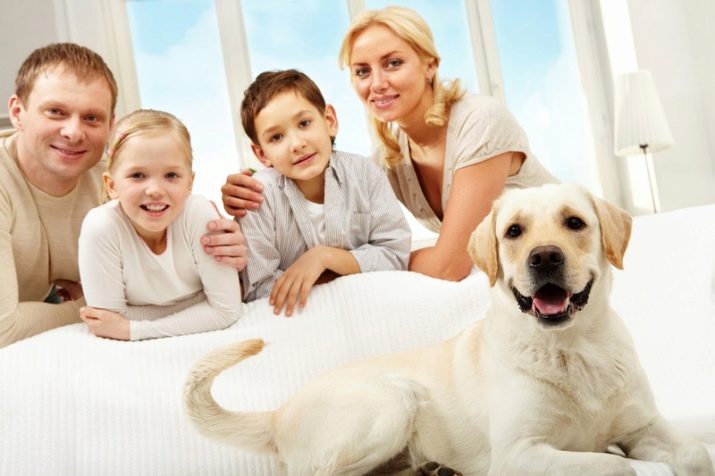
Conditions of detention
In the House
Before a puppy appears in the house, it is important to prepare the home. You should take care of the safety issues of the future pet. So, it is imperative to remove all small parts and human toys from the floor as high as possible. Also important hide in a safe lockable cabinet all household chemicals, fertilizers, detergents, insecticides - a curious dog child will certainly take an interest in the contents of interesting bottles.
The dog should not have access to house plants.as many of them can be toxic to animals. For example, rhododendrons, chrysanthemums, oleanders can be harmful to the puppy's body. The same applies to medicines for both humans and animals.
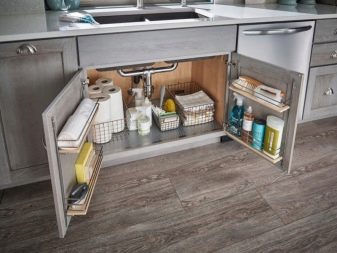
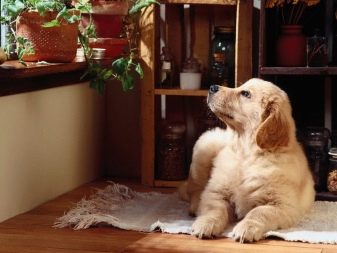
Even if a puppy has opened a pack of harmless wool vitamins and ate the entire pack, this can have a very negative effect on his well-being and general health.
Organize your dog's own resting area. Put a bed in a convenient place or put a house, you can put toys that are allowed for the dog next to it.The couch should be located away from the balcony and heating appliances. Don't forget to get bowls for food and water, and place them as far away from the bed as possible - usually it's best to put bowls in the kitchen.
While keeping your dog in the house, do not change the place of feeding and sleeping. If the owner is not ready for the animal to sleep next to him on the bed, then the pet should be weaned from this habit from an early age. A puppy accustomed to bed sleeping with great difficulty will refuse it at an older age.
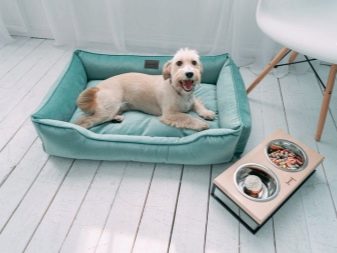
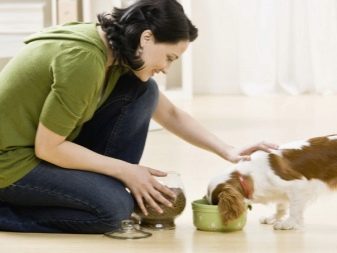
Do not forget to purchase all the paraphernalia - a collar, leash, clothes for walking, if necessary. Pay special attention to the size of the inventory and remember to change it as the dog grows. Do not throw things around the house that are a pity, otherwise they will all be mercilessly destroyed by dog's teeth. Do not reward your puppy for grabbing an old sneaker as a toy, but immediately stop these actions. The animal does not distinguish between old and new shoes, and next time there may be a new expensive shoe in its teeth.
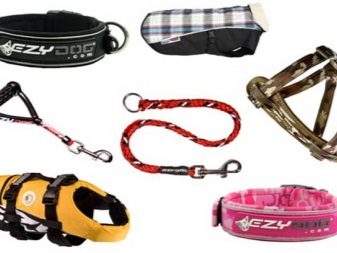
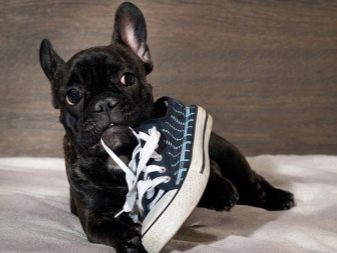
Outside
The possibility of keeping a dog outdoors is determined by its breed. It is allowed to keep hunting dogs, long-haired individuals, large dogs in the suburban area. If this is a chain or aviary content, then every day you need to lower the animal to walk around the site or take it out on a leash outside the territory.
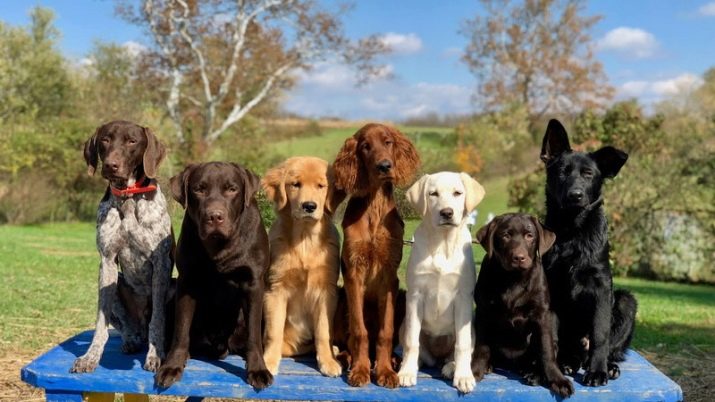
Before adopting a dog for keeping in a private area, you need to build her a booth or aviary... An aviary is a more pet-friendly option than a chain. It is customary to place the "house" for an animal slightly on a hill as far as possible from cesspools, barns, metal walls. It shouldn't be too sunny. You can attach the aviary to the barn. The entrance to the house and the gate should be open to the eyes of the dog.
Aviary parameters depend on the size of the dog. If this is a representative of a medium-sized breed (less than 50 cm), then an aviary with an area of 6 sq. m. With a height at the withers of 50-65 cm, it is customary to build an aviary of 8 square meters. m. Larger individuals should be kept in enclosures with an area of 10 sq. m. For any parameters, one of the walls of the enclosure should not be less than 2 m. The area doubles when keeping two pets.

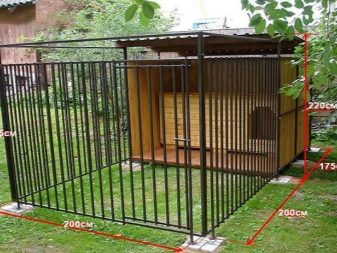
Three walls should be blank to reliably hide the animal from the wind. It is important to equip an insulated booth inside. You can construct a building made of slate, metal profile, but a wooden enclosure will be more comfortable for the dog. Only important so that the raw materials are treated with an antiseptic. The roof is recommended to be made of shingles or other soft material. These products protect the dog not only from precipitation, but also from excessive noise. The door is made in such a way that it opens inside the enclosure.
Arranging a booth inside an aviary or in an open area, no need to build a huge castle for the animal... Moreover, a spacious booth will be uncomfortable for the dog, in winter it blows well, which can again cause discomfort to the pet.
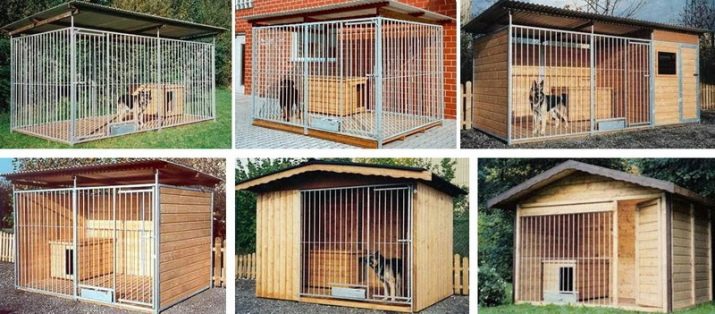
A good quality kennel is made of wood, is not blown out, and its structure consists of a cool vestibule and a warm inner section.
The inner area should be enough to turn the dog and its entire length with outstretched legs.... Usually, the height is calculated by the sum of the animal's height at the withers and the thickness of the bed plus 10-15 cm.
The width depends on the sum of the width of the berth and the vestibule. The depth is determined by the sum of the parameter from the withers to the tips of the front paws and 10-15 cm. For insulation, you can use mineral wool or foam. The floor is installed at a height of 10-15 cm from the ground. It is better to make the roof pitched and removable so that you can clean it without any problems and get the sick dog out of the booth if you feel unwell.
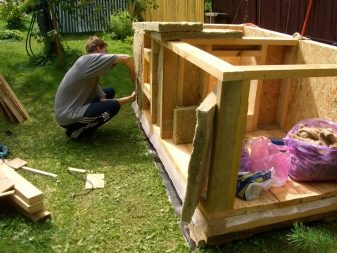
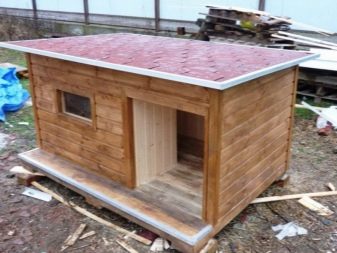
Feeding rules
Proper nutrition is determined by the breed of the dog.And do not think that if an animal does not have a breed, then it is unpretentious in food and can be fed with food from the table - such food has a negative effect on all organs of the dog and leads to serious diseases. At birth, the puppy is fed by the mother, and the most optimal option for an adult pet and for the owner is the purchase of ready-made dry food. The main thing is to respect the daily portion and not offer a supplement, even if the dog asks. Dry granules swell in the stomach, and later the animal will feel complete satiety.
The feeding instructions are indicated on the food packaging. Should be given preference only premium and super premium feed. In general, it is advisable to visit a veterinarian with the pet, so that he himself calculates the daily rate of dry food in accordance with the weight, age, breed and health status of a particular dog.
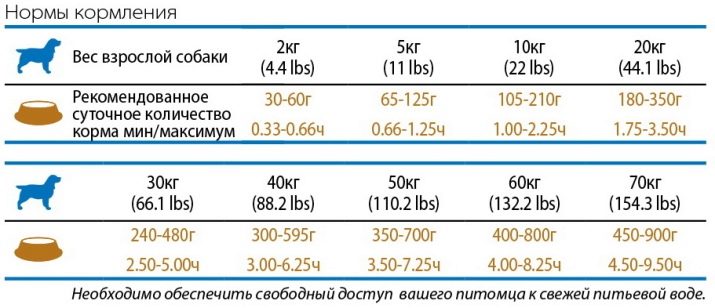
Another important rule when feeding with dry food is always access to fresh water for the animal.
There are breeds that, on the contrary, are recommended to be fed with natural food. These include, for example, the Akita Inu. When feeding your dog natural food, avoid sugar, fried, smoked, salty foods, and chocolate. The main diet of some breeds should be from raw meat and fish, for others the main menu consists of boiled lean meat. Therefore, in this case again it is important to check with your veterinarian.
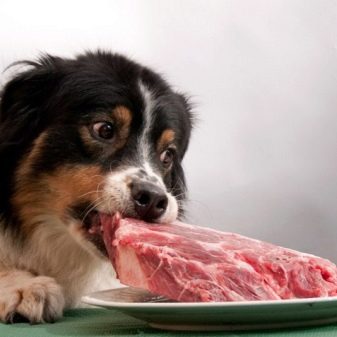
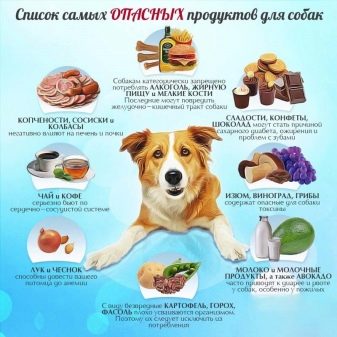
Try to feed your pet at the same time. Keep in mind that the older the dog gets, the fewer times it needs to be fed per day. So, if 2-month-old puppies are fed up to six times a day, then two meals a day are enough for an adult dog, and a single feeding is enough for a pet at an advanced age.
While feeding the dog be sure to monitor her condition. If the animal, which usually eats well at this time, refuses food, then this is a reason to take the pet to the veterinarian for examination. Sometimes, refusal to eat can be caused by hot weather. Also, when changing the feeding method, carefully monitor the reaction of the dog's body. If the animal shows signs of intestinal or stomach upset, then it can be concluded that this type of feeding is not suitable for him.
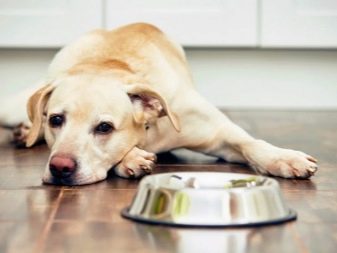

Dog walking
All dogs need daily walking, even representatives of miniature breeds, which are accustomed to relieve the need in an apartment for a diaper. Walking is not only an opportunity to go to the toilet, but also an opportunity to throw out the energy accumulated in four walls. During a walk, the owner plays with the dog, jogs with it, teaches exercises, all these physical activities are necessary for the animal to fully develop. Besides, going outside is also a new experience for the dog.

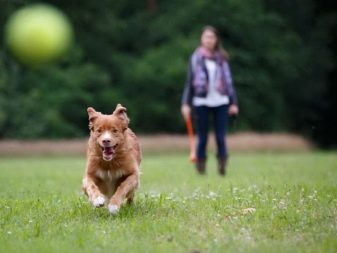
The larger the dog, the longer it needs to be walked. Usually the walk lasts from 15 minutes to an hour. Small puppies are trained to toilet on the street, walking as long as possible and taking them outside several times a day. It is recommended even for the first time to take a vacation at work in order to fully and quickly accustom the dog cub to relieve needs on the street. Walking for an adult pet should be done at least twice a day, even in bad weather.
By the way, for some dogs, a cloudy day can be a good way to build up and strengthen their immune system. Small dogs, on the other hand, are usually dressed warmer on such a day in order to avoid hypothermia.

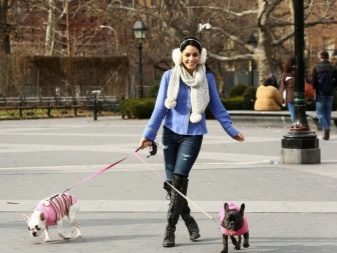
There are basic rules for walking a dog of any breed that every owner must follow.
- Walk your pet on a specially designated area. If such a place is not provided in the village, then go with the animal somewhere outside the city or to an open lawn where there are few people.
- When walking in the yard, remember to clean up solid waste behind the dog.Stock up for this with special bags, a spatula and gloves.
- When walking an animal in the city, wear a muzzle on it. This is necessary not only for the safety of people, but also for the protection of the pet itself.
- Do not let the dog pick up various objects from the road, wean the puppy from this habit from childhood. An unexpected treat can be rat poison or a poison planted by dog hunters.
- Combine walking with training. In the open air, the dog learns commands better, moreover, there is more space for learning various tricks.
- Keep your pet on the leash when walking in the city. A lot of dangers awaits the animal at large: cars, homeless dog packs, poison scattered by ill-wishers.
- Never go with your dog on city holidays. This is especially true for events ending with fireworks. From the explosion of firecrackers, even a small-breed dog can break off the leash, and it will be very difficult to find an animal lost in the city. During the New Year holidays, take your pet on a very reliable leash in two collars, to one of which attach information with your contact details.
- Return home with your pet when he looks a little tired. This means that the animal has thrown out all its energy, has undergone a sufficient amount of physical exertion - all this has a beneficial effect on the physical and mental state of the dog.
- Read the breed information before training. For example, dachshunds are not allowed to jump, and pugs are not allowed long runs, so make sure that the type of activity you choose is suitable for your pet. The best option is to consult a dog handler.
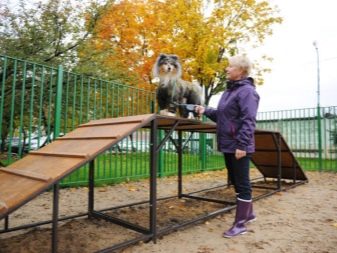
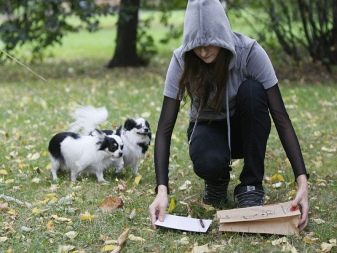
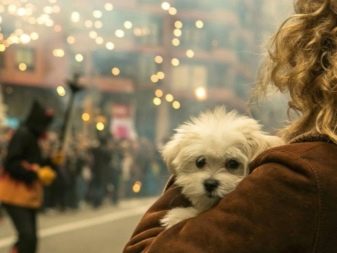
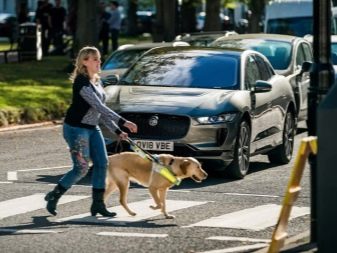
Hair care
Do not think that you need to take care of the coat only with the participation of the dog in the exhibition. Even mongrel dogs need careful grooming. Wool, which is poorly looked after, becomes dirty, untidy, rolls into tangles, which gives the animal serious discomfort. Hair problems can cause itching, irritation, and other dermatological problems in your dog. Thus, the health of the pet depends on the quality of hair care. This procedure has several stages.
- Combing out. It is carried out 1-2 times a week, depending on the length of the coat. For several minutes, the owner must comb the four-legged friend's fur coat with a special brush, removing faded hairs. The owner should be especially careful when combing out the dog's sensitive areas: the area near the ears, the groin area, the abdomen.
- A haircut. A necessary manipulation for long-haired breeds. The procedure allows you to establish high-quality thermoregulation and performs an aesthetic function.
- Trimming. This step is carried out for wire-haired breeds. Ripe shedding wool is trimmed. Usually the process is carried out by a professional groomer.
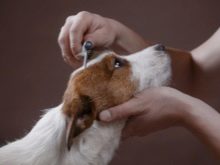
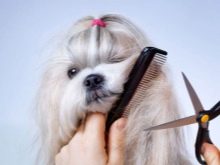
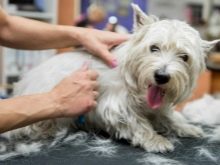
Hygiene and health
Bathing
The frequency of this procedure depends on the breed. Wire-haired individuals do not need frequent bathing, it is enough to comb and wipe them with a damp cloth, and a full-fledged wash is usually performed only before an exhibition. This procedure is optional for smooth-haired breeds, and in this case the water temperature should not exceed 36 degrees. Most dogs are usually bathed once a season. There are some simple tips to follow when swimming.
- Do not brush your pet's coat after bathing, let the hair dry out on its own.
- Choose a shampoo according to your coat. For example, a Chinese Crested dog needs frequent washing using a special product with a mild, gentle effect.
- Do not wash a large breed animal more than once a month, but it is important to wipe its paws after every walk outside.
- Do not let your pet swim in bodies of water where people are not allowed to swim. Dirty water is hazardous to animal health.

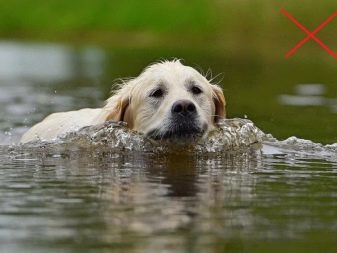
Vaccination and treatment against parasites
On average, every three months each dog needs to be treated for parasites. This is especially true for individuals kept on the street. For antiparasitic treatment, veterinary pharmacies offer drops, suspensions, tablets. Most veterinarians prefer pills, however, when using them, it is important to correctly calculate the dose per animal weight.
There are drops that work in a complex way - they rid the pet of fleas and worms. In general, the most popular remedies for worms are Prazicid, Drontal Plus, Prokoks, Kaniquantel Plus, Pratel, Polivercan.

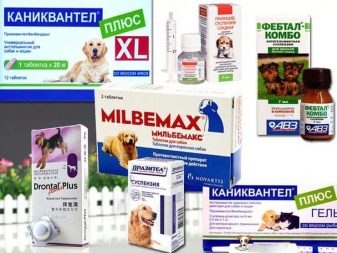
The first vaccinations begin for a puppy at two months of age. Until this time, the animal cannot be taken outside. Complex vaccines "Nobivak" or "Eurikan" provide protection against diseases such as distemper, leptospirosis, hepatitis, parvovirosis, piroplasmosis and rabies. Vaccinations are carried out once a year. The responsible owner puts a veterinary passport on the dog, in which the vaccination schedule is prescribed.
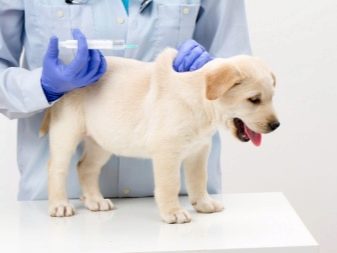
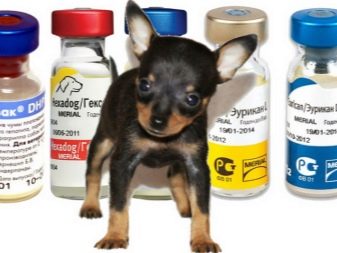
Eyes and ears
It is customary for dogs to treat their eyes a couple of times a week with a cotton pad dipped in warm water or tea leaves. Particularly in need of careful observation are representatives of breeds prone to diseases of the visual organs. These include, for example, Shar Pei or Pugs.
No less thorough you also need to watch your pet's ears. The owner should check their cleanliness, lubricate them with vegetable oil or a special agent, timely notice leaks, scratching, irritation, and an unpleasant odor. Lop-eared breeds are prone to hearing problems.
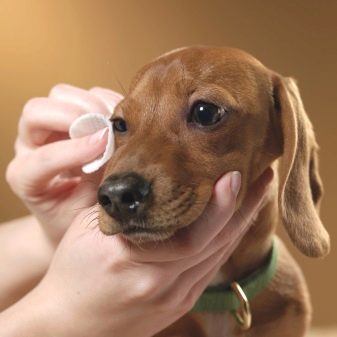
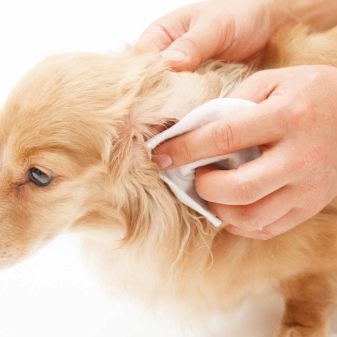
If you suspect a medical condition, it is important to take your dog to the veterinarian immediately.
Teeth and claws
To prevent the formation of tartar, the dog's teeth are regularly brushed with a special powder or paste. Also, do not deny your pet the pleasure of chewing on a special bone for natural cleaning of teeth from plaque. Unkempt teeth are a common cause of digestive problems and serious oral health problems.
A couple of times a month, a responsible owner trims the nails of his pet. To do this, you can use a special nail clipper. It is important not to snag a blood vessel during the procedure, otherwise the dog will experience pain and bleeding will open.
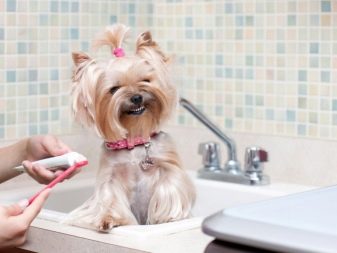

If the owner is not sure of his accuracy, then it is better to entrust the procedure for trimming the claws to a veterinarian.
For how to take care of your dog, see the next video.






































